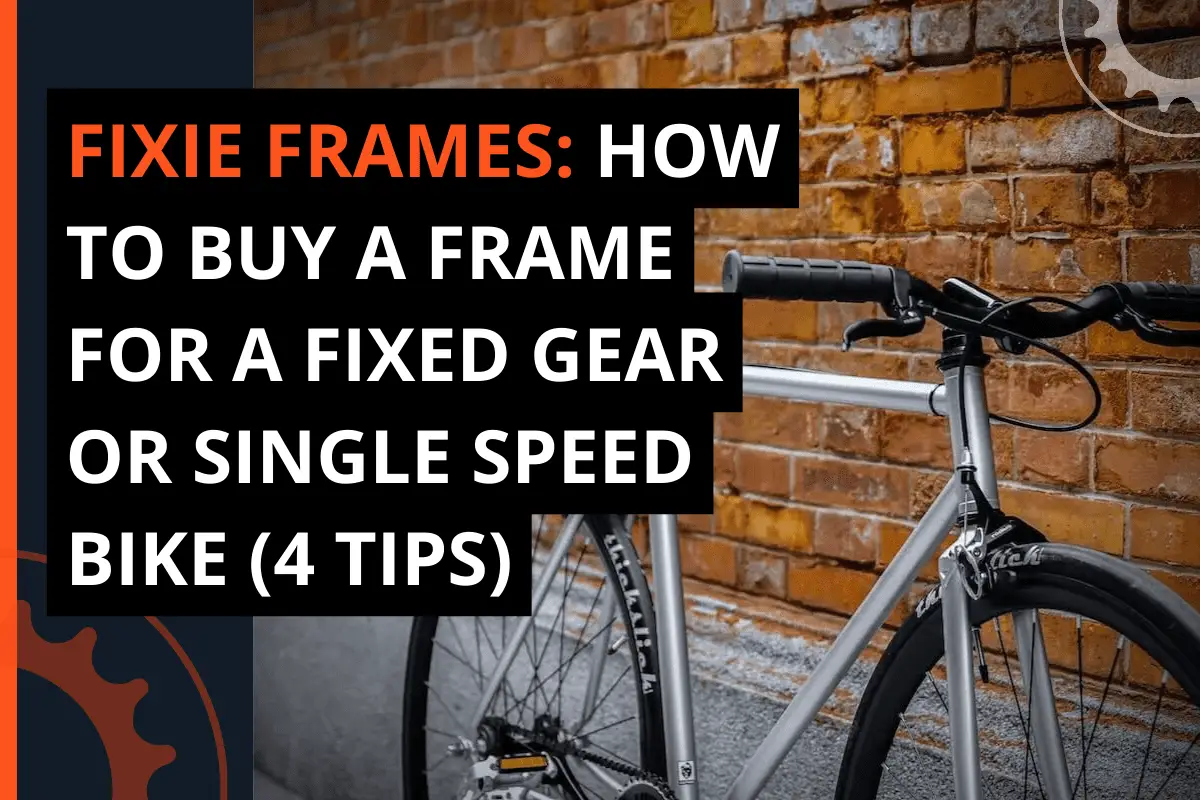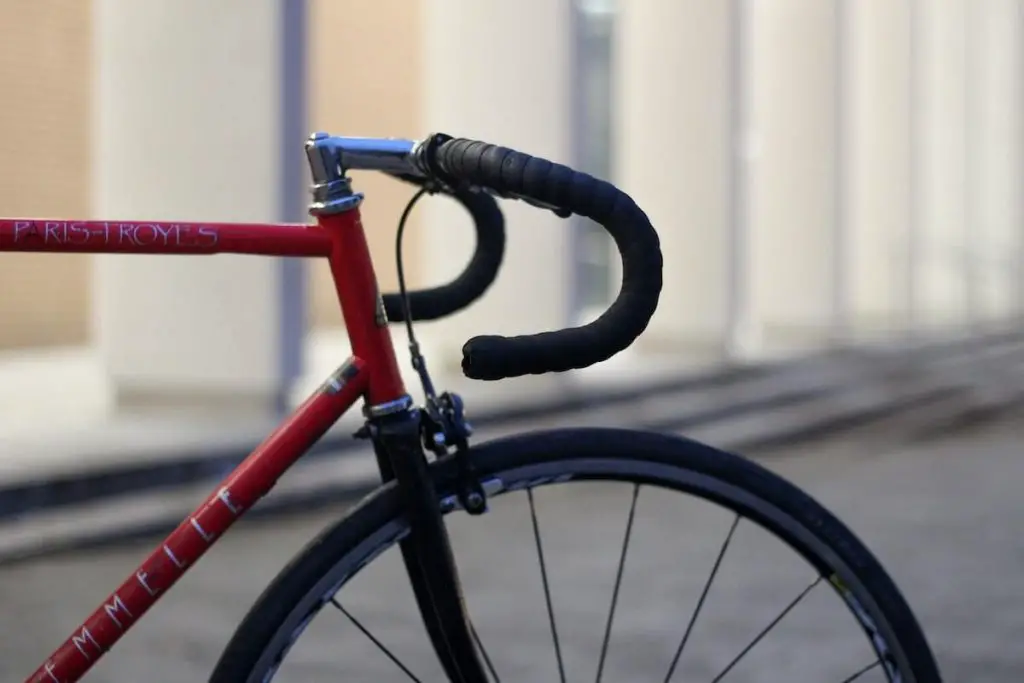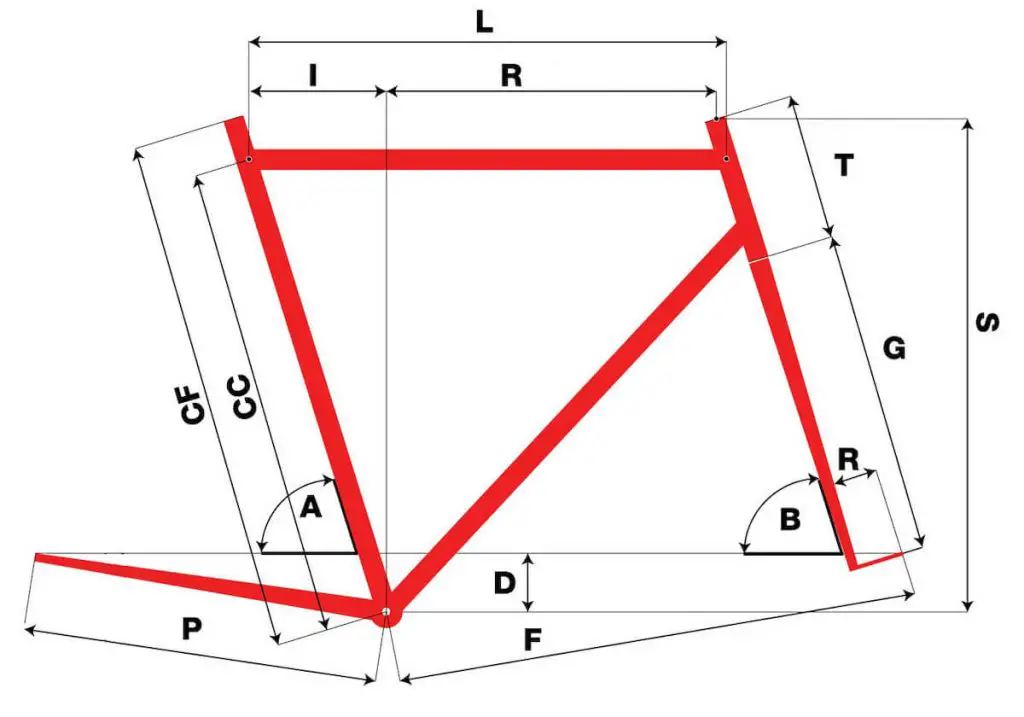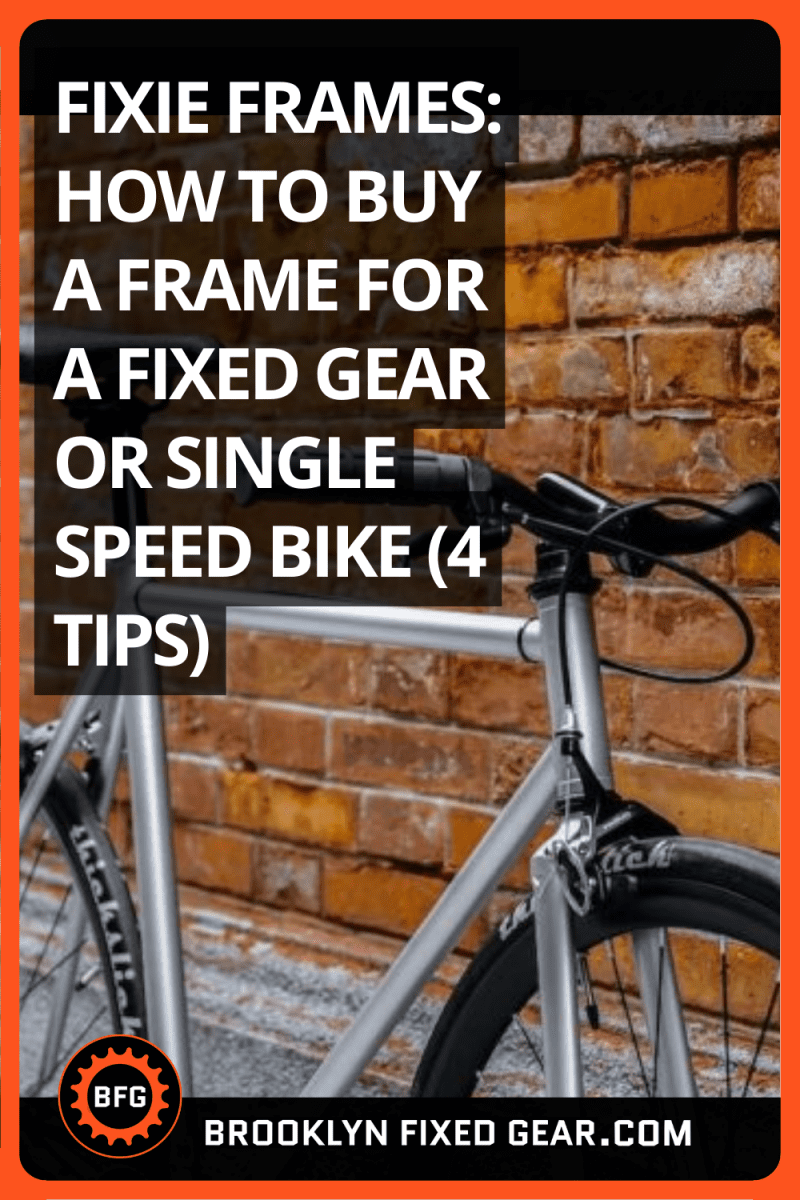If you’re considering building a fixed-gear bike, you might be wondering how to choose a frame. Fortunately, choosing the right frame is not as difficult as you think. So let’s discuss how to choose the right frame for your fixed gear build.
In this article, you will learn how to choose a bike frame that’s right for you.
When buying a bike frame, ensure the bike’s geometry is compatible with your riding style. Additionally, make sure that the frame is the correct size and style and that it fits within your budget.
What is a bicycle frame?
A bicycle frame is the backbone of your bike. It is the metal framework that supports the bike’s components, and it keeps the bike together. Frames can come in many shapes and sizes, depending on the type of riding that the bike will be used for.

State Bicycle Co. Black Label 6061

State Bicycle Co. Black Label 6061
How to choose a fixed gear frame
Below are four things you should consider before purchasing a new frame for your bike.
1. Consider the material
The following are the most popular materials for fixed-gear bike frames.

Steel
Steel was once the preferred bike-building material. It’s heavier than aluminum and carbon fiber, so high-end bikes avoid it. It’s more expensive to mass-produce than aluminum, limiting its use in cheaper models. Steel is easier, cheaper, and stronger than carbon fiber and aluminum. Thinner tubes allow vertical flex in a bike. Steel is durable, fatigue-resistant, and easily repairable, unlike carbon fiber and aluminum.
Aluminum
Aluminum is the most common bike frame material because it’s corrosion-resistant, light (though not as light as carbon fiber), and strong. In addition, it’s affordable, making it popular among budget-conscious riders and racers.
It’s stiff and responsive, so it’s good for criterium bikes because they accelerate quickly and handle well. However, stiffness often means a harsher ride because it absorbs road buzz less than other frame materials. So it’s not ideal for dirt roads or long-distance touring, where comfort is key.
Carbon Fiber
Carbon fiber is the most common frame material for high-end mountain, road, and track bikes (including most professional bikes). It’s made of carbon sheets bonded in a mold with resin. As a result, carbon fiber is lighter than aluminum, steel, or titanium at a given stiffness.
Lower density means carbon frames absorb (rather than transmit) road vibration, making for a more comfortable ride. In addition, carbon fiber can be formed into complex shapes, giving bike makers design freedom. This improves a frame’s aerodynamics.
Carbon fiber bikes are the most expensive, though their price has fallen. Unfortunately, these frames break more easily than metal ones, and once they do, you can’t ride them anymore.
2. Choose the size based on your height
A bike frame is measured by the top tube length. This measurement is typically denoted in centimeters. You will often hear bike size and frame size used interchangeably. Check out our guide on determining your ideal bike size for more information.
Mountain bikes are measured in inches or descriptive sizes (small, medium, etc.). Fixed gear, single-speed, and road bikes are measured in centimeters or descriptive measurements, although hybrid bikes may be any of the three.
Below are the most common bike frame sizes for a fixed-gear bike.
49cm
A frame of 49 cm is considered small. Shorter riders favor smaller fixie frames, but a tiny frame has other qualities to consider. For example, many riders who value performance choose smaller frames because they allow for lower handlebar positions, which results in more power and acceleration.
53cm
A 53 cm frame is considered medium-sized. This outstanding all-around fixie frame size provides a comfortable ride for riders of average proportions while also offering a good balance of performance and stability. Other bike parts, like the handlebars and saddle, can also be changed to fit different riding styles.
57cm
A frame of 57 cm in length is considered large. Larger frames provide a more stable ride, which is ideal for tall riders. In addition, handlebar settings may be placed high on the 57 cm frame, providing a more comfortable seating posture for riders looking to cruise. However, performance is lost.
Follow these steps below to find the right size frame.
1. Ascertain your height
Knowing your height will allow you to make a more accurate bike size selection. Also, the rider’s height is a key factor for most bike makers when they think about how comfortable the bike is to ride.
Don’t have a way to measure? Here are a few measuring tapes you can use to help you determine your eight.
[azonpress template=”grid” asin=”B07PJ177WX,B01M20Y619,B07G9XBT66″]
2. Check the manufacturers’ sizing chart
Once you’ve determined your height, find the manufacturer’s sizing chart. Their website should contain this information. That will give you a good indication of what size you need.
If you cannot find a proper fixed gear bike sizing chart on the manufacturer’s website, check out our chart below.
| Height | Inside Leg | Frame Size |
| 5’1″ – 5’3″ | 27″ – 29″ | 48cm |
| 5’3″ – 5’5″ | 28″ – 30″ | 50cm |
| 5’5″ – 5’7″ | 29″ – 31″ | 52cm |
| 5’7″ – 5’9″ | 30″ – 32″ | 54cm |
| 5’9″ – 5’11” | 31″ – 33″ | 56cm |
| 5’11 – 6’2″ | 32″ – 34″ | 58cm |
| 6’1″ – 6’5″ | 33″ – 35″ | 60cm |
These are estimates, but for most people, they are sufficient. Keep in mind that not everyone’s size is the same. If you know you want your bike to be a little bigger, choose one size larger than the recommended size (the same goes if you know you want a smaller bike).
3. Consider the frame geometry
Bike geometry is a set of measurements in lengths and angles that define the configuration of a bike. The primary focus points are the wheelbase, steering axis angle, fork offset, and trail. All of these measurements have an impact on how a bike handles.
The geometry of a bike affects its performance in various ways, depending on its design and manufacture. When designing a bike, it is critical to consider the rider’s weight and size. Different bikes are designed for different types of riders.
The geometry of the bike affects how it handles and rides. A bike with a larger frame, for example, will ride more steadily and smoothly than one with a smaller frame.

4. Consider your financial situation.
The cost of a frame is largely determined by type and quality. The most expensive frames are carbon fiber frames. First, consider your reasons for purchasing and the terrain you expect to encounter, such as roads, rocky trails, etc. Only then can you know what frame best suits your lifestyle.
Can you buy a used bicycle frame?
Yes. Buying a used bike can save you thousands. However, when it comes to buying a used bicycle frame, there are several important factors you should consider.
First and foremost, make sure to check the frame’s geometry. This refers to the size and shape of the bike. You want your frame to fit well so that you don’t experience any pain or discomfort when riding it.
Next, examine the frame carefully. A flashlight can also assist in highlighting any flaws. Check the top and bottom tubes next. Carbon frames are especially vulnerable to clamp crush injuries.
Examine all of the tubes carefully for ripples or damage. Don’t buy the frame if you see cracks like the ones in the photos above. Also, look for cracks “from where the mount and the tube meet.”
Check the headset bearing seats and the head tube for wear if excessive fore and aft movement occurs. Worn-bearing seats can be fatal or, at best, costly to repair.
Finally, examine the dropouts for wear caused by the quick-release heads or thru-axles.
Want more tips on buying a used bike? Watch this video called How To Buy A Used Bike – What To Look For When Buying A Second Hand Road Bike from the Global Cycling Network YouTube channel.
Frequently asked questions (FAQ)
Below are some commonly asked questions about bike frames.
Is there a difference between men’s and women’s bike frames?
Fixed gear bikes are unisex, meaning there are no women’s or men’s fixed gear bikes. However, it should be noted that there are distinctions between men and women that should be noted.
Women’s torsos are often shorter, necessitating a shorter top tube. This is when “woman-specific” designs enter the picture. These bicycles may be suitable for guys with shorter upper bodies or riders who want a more upright stance. Using different-sized stems can change the top tube length to a useful length, but this might change how the bike handles.
Can I ride a bike that is not my suggested size?
If you ride a bike that is too small for you, you will likely feel cramped and may be unable to raise the saddle high enough to pedal effectively. If you ride a bike that is too large for you, you will quickly feel overstretched.
Can I use standover height to determine frame size?
While researching the proper frame size, you might have encountered a bicycle geometry term called standover height. The standover height is the distance between the ground and the top tube of the bike.
However, standover height only applies to fully assembled bikes, not individual frames. This requires the bike frame to have wheels attached. Therefore, you can’t figure the standover height on a frame alone. That is why standover height is not applicable when determining frame size.
What materials are bike frames made of?
The most common materials for bike frames are steel, aluminum, and carbon fiber.
What are the most common fixed gear frame sizes?
The most common frame sizes are 49 cm, 53 cm, 57cm. A frame with a size of 49 cm is considered small, a frame with a size of 53 cm is considered medium, and a frame with a size of 57 cm is considered large.
Conclusion
It might be difficult to find the correct frame size. This is especially true if you are accustomed to riding road bike frames and are transitioning to fixed gears. But hopefully, these tips will help you select the size that’s right for you.
In this article, we covered how to determine what size bike you should get when shopping around for a new fixie. Here are some key takeaways:
Key takeaways
- Choosing the right bike size is important for comfort and safety.
- The length of the top tube measures the frame size.
- You measure your height and use the bike manufacturer’s sizing chart.
I’m riding a 52 cm. How about you? Let us know in the comments below (we read and reply to every comment). Also, if you found this article helpful, check out our full blog for more tips and tricks on everything fixie. Thanks for reading, and stay fixed.
- Articles about Fixed Gear and single-speed Cycling and Equipment
- Bike frame materials explained: carbon vs aluminium vs steel vs titanium
- Fixed-gear bicycle – Wikipedia
















